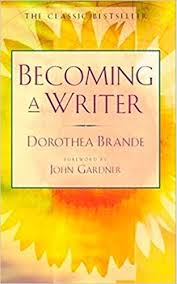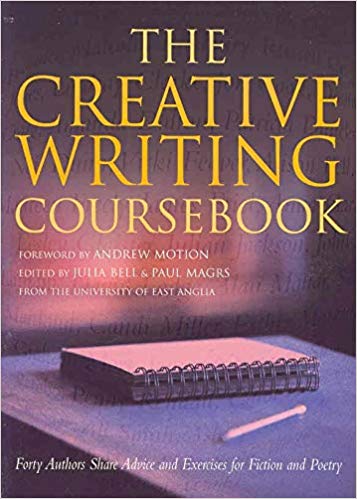On a July morning, already hot, the metallic blue
cloudless sky promising another scorching day, Thomas set off from the cottage
he and his family had rented for the last ten years just north of Bergerac in
the Dordogne. The others were only just emerging from their beds and he would
be back in time for a shower and have breakfast with them.
He sometimes manages to cajole his son-in-law James to
join him on these early morning cycle rides but generally he found himself
riding through the narrow wooded lanes alone. Today this suited him fine. He
always enjoys doing the circuit he discovered when they first stayed at the
house but James, who is 40 years younger, was rather competitive. Riding alone
allowed Thomas to enjoy the early morning tranquility as the route wends its
way through the woods and fields of the valley side. Since retiring he had
rented the cottage every year for two weeks in July and most days he rides
round the circuit before breakfast. And so far every year he has managed a
faster time than the year before, thanks mostly to James.
The eleven kilometre circuit is roughly triangular,
the first section rising gently through the forest in between grassy banks of
ferns and wildflowers and up the valley side. At this time of day cars are few
and far between and more often than not the ride can be completed without
seeing a single vehicle. You can hear them approaching long before they come
into view so you are never taken by surprise, not like the deer that
occasionally bound across the road. Concentration is always necessary as the
margins of the road have loose gravel, especially on the bends, pushed there by
the occasional cars and farm vehicles, and in the early morning there are
sometimes damp patches left from the overnight dew yet to be burnt off by the
warming sun.
After the first three kilometres uphill the circuit
turns left at a T junction onto a wider flatter road for another three
kilometres before turning left again for the third leg of the triangle home.
This, apart from a few short undulations, is a wooded downhill swoop through a
series of sinuous bends. The road is narrow, like the ascent, with gravel and
trees on each side. For most of the descent the bends are open enough to see
through them and choose a line that avoids the hazards without having to brake
and slow down. About one kilometre before home the road bursts out from the
trees into the bright sunlight and curves sharply to the right above a steep
valley side where the hamlet can be seen in a bend of the stream in the valley
below. The road takes a final left-hand bend past a farmhouse and a couple of
old tobacco drying sheds where you brake hard before crossing the little bridge
over the stream and home.
Riding with James is always hard. Apart from being younger he is also fitter and lighter, a particular advantage on the initial lengthy uphill section. It is on the climb that he gradually leaves Thomas behind and by the left-hand turn at the top he is usually a good 100 metres ahead. Thomas however is an experienced cyclist and when he was younger, fifty years ago, he had ridden for a minor professional team as a domestique, a support rider for the team’s star riders. His career had come to a sudden end when he crashed, with life threatening injuries, in his last race. The team was based near Paris but the main sponsor was a wine exporter based in Bergerac. This last race had been in the Bergerac region but he could remember very little about it. It was in early August and one of the highly lucrative post Tour de France one-day races, usually about 100 kilometres or so and sponsored by local businessmen and town councils for the publicity. The results of these races were never in doubt. The stars of the previous Tour De France were paid generous appearance money to take part in them and the adoring public lining the roadsides and the finish expected to see their heroes fight it out for the win. The races were fixed to ensure they were a spectacle and the crowds were not disappointed. As a locally sponsored team, Thomas’s had been invited to take part. Their opportunity to shine and get publicity for their sponsors and be noticed was in the earlier stages of the race before the choreographed last few laps of the circuit produced the prearranged conclusion. It was on an out of town section of the race on a fast wooded descent that he had his career-ending accident, avoiding a crash just in front of him and going over a barrier on a bend that sent him somersaulting into the valley below.
Fifty years later, he had forgotten none of his technique and race craft. By pacing himself up the three kilometre hill he could minimise his loss to James and accelerate over the top and hit the flat section at a good speed. James on the other hand tended to push too hard on the climb and lose speed in the final metres before the top. As a result he had to continue his effort to build up speed on the flat. Thomas, hitting the summit faster, could get up to speed on the flat much quicker. This meant he could close most of the deficit before the next turn into the three kilometre descent. Once going downhill he was in his element. James was more cautious on the descent, only pedaling occasionally and braking to slow down for most bends. Thomas pedaled all the way down in a high gear, approaching speeds of 40 mph at times, occasionally skimming off a little speed with the gentle application of the front brake. His experienced and confident use of gears, superior bike handling and selection of lines through corners meant that he always caught James on the descent and disappeared up the road to finish comfortably ahead at the cottage. But each year it got harder, each year James left him further behind on the initial hill, and each year it took a little longer to catch him on the descent. Every year James was a stronger, better bike rider, while Thomas just got older.
This morning he felt good. The air is still and cool
with just a hint of the coming heat of the day. The sun was already quite high
in the east, filtering through the tops of the trees and sparkling in the dew
on the leaves, creating fragmented rainbows in the last lingering strands of
mist. He seemed to be gliding up the hill effortlessly. Looking at his Garmin
bike computer he saw he was on for a record run. There are only three days left
of their holiday and so far he had not beaten last year’s time. He accelerated
over the top of the hill and swung left, reveling in the feeling of speed and
power, the immediate responsiveness of the bike, reminding him of the glory
racing days of his youth. The flat section seemed to fly backwards past him and
almost before he realised it he was at the turn at the top of the descent to
home. Lifting the left-hand pedal and
shifting his weight to the inside he momentarily freewheeled through the turn
even faster than usual, changed up through the gears and putting the power
down. This time he was not chasing James. It was him against the clock, what
the French call ‘the race of truth’. Nowhere on the descent did he touch his
brakes. He knew he was taking risks but he could see the line he wanted through
the bends and backed his skill to stick to it. He was flying: the air whistled
in his ears accompanied by the rhythmical swish of the tyres on the road with
each pulse of power he put through the pedals. He attacked the short rises and
sprinted down the next slope at ever increasing speed. In his imagination, he
is on a lone breakaway, only 20 seconds in front of the rapidly catching
peloton, the sprinters’ lead out trains sacrificing every ounce of energy to overhaul
him and get their man to the front for the finish. One more rise to get over
and then the final downhill swoop to the line to receive the adulation of the
crowd cheering and banging the barriers as he roared past, arms in the air.
Last bend: he emerged into the full sunlight, catching a glimpse of the cottage
at the bottom of the valley. Then the old tobacco drying sheds seemed to
cartwheel through the air above him, the grass verge reared up into his face. The
shock of impact. Blackness, silence. Nothing.
A pink veined, fluttering light suffuses everything. A
few fleeting shapeless shadows come and go as the light brightens. Dull aches
mingle with a comfortable soft warmness and a rising sensation of murmuring gradually
increasing
in volume. Thomas half wakes up to find what seem to be some of his teammates
around him. He realises he is in a hospital bed surrounded by curtains, tubes
and wires. A screen on a stand beside the bed displays his vital functions. He
has no recollection of how he had got here but tries to hang on without success
to the fading fragments of something, he knows not what, that he had been
experiencing only a moment before. A feeling of wind, elation, freedom, youth,
animal invincibility, oneness with the laws of physics and nature – a joyous
elemental state of existence, of being. But now a feeling of desolation and
loss, of regret and remorse. Whatever it was, it was once his, however
fleetingly, but now lost. He heard the voice of his team manager talking to a
white coated figure at the end of the bed. He would live thanks to his high
level of fitness and health. He should make a complete recovery in time but his
racing career was probably over. The main concern was for the head injuries and
whether these might have longer term effects. As he drifted back to sleep Thomas
tried to recall how he had got here, what had happened, and had fragmentary
memories of hitting a roadside barrier, the French landscape flying over his
head. But that was it.
For the next few days he drifted in and out of sleep.
In periods of half consciousness, surfacing briefly from his drug induced
stupor, he saw and heard the shadowy presence around the bed of a different
cast of visitors, a young couple, two children, a weeping woman that called him
husband.

